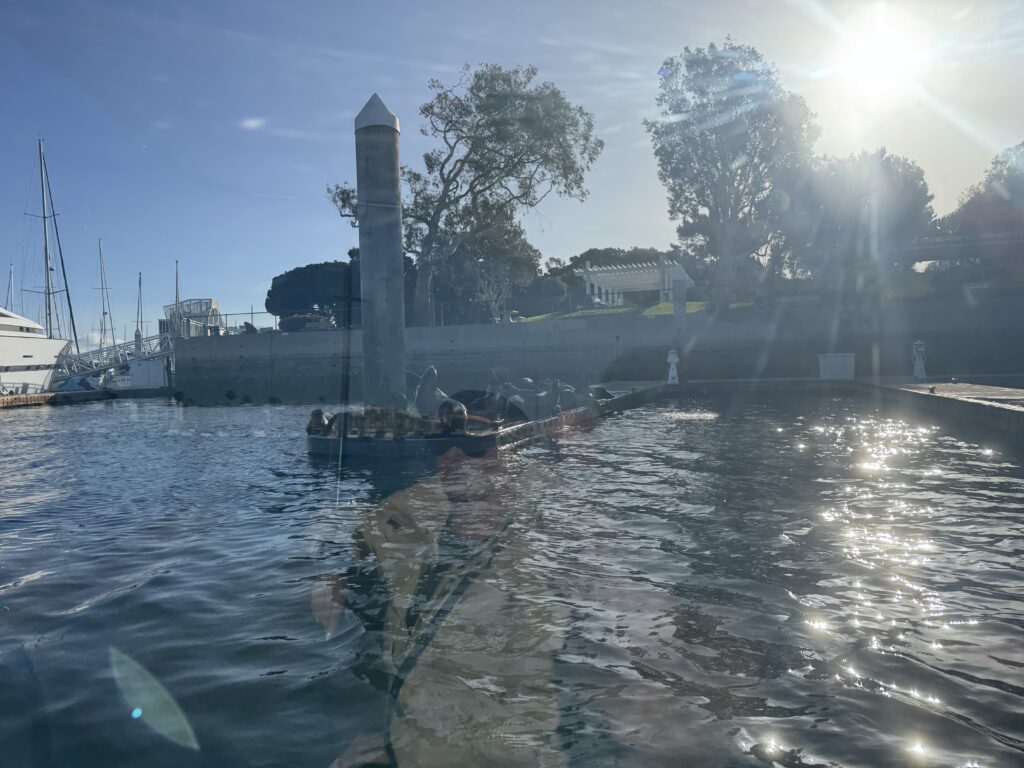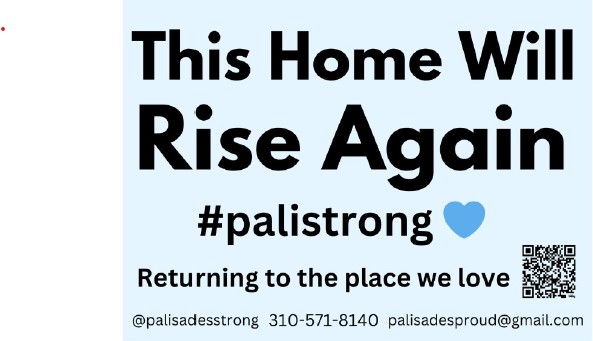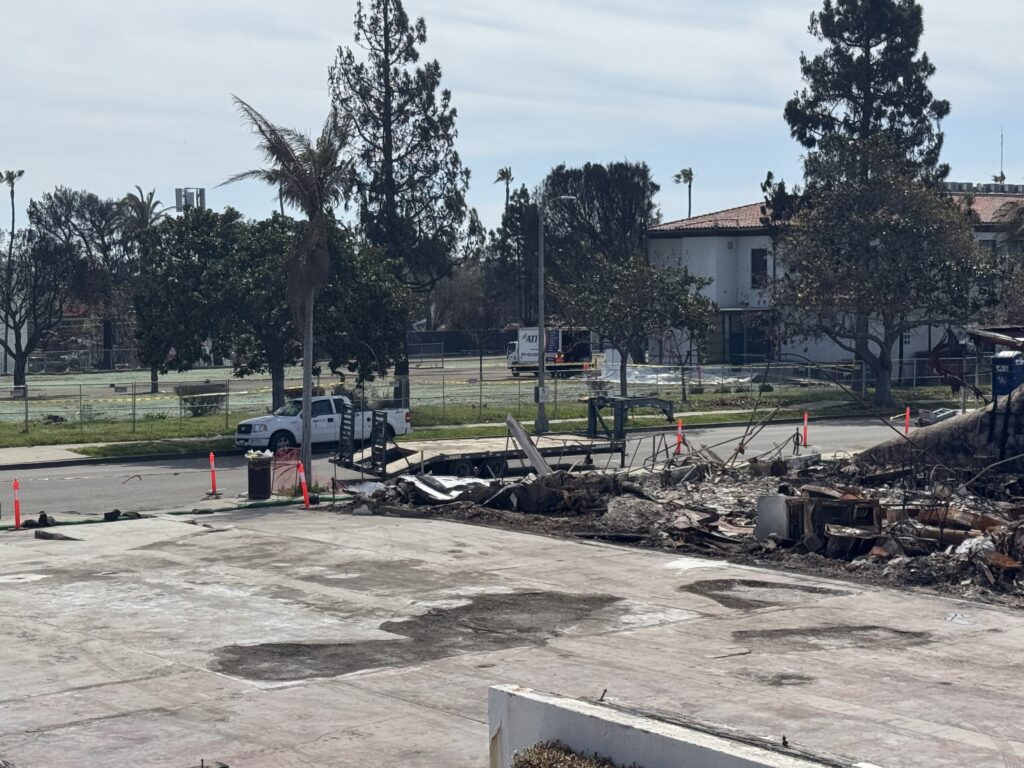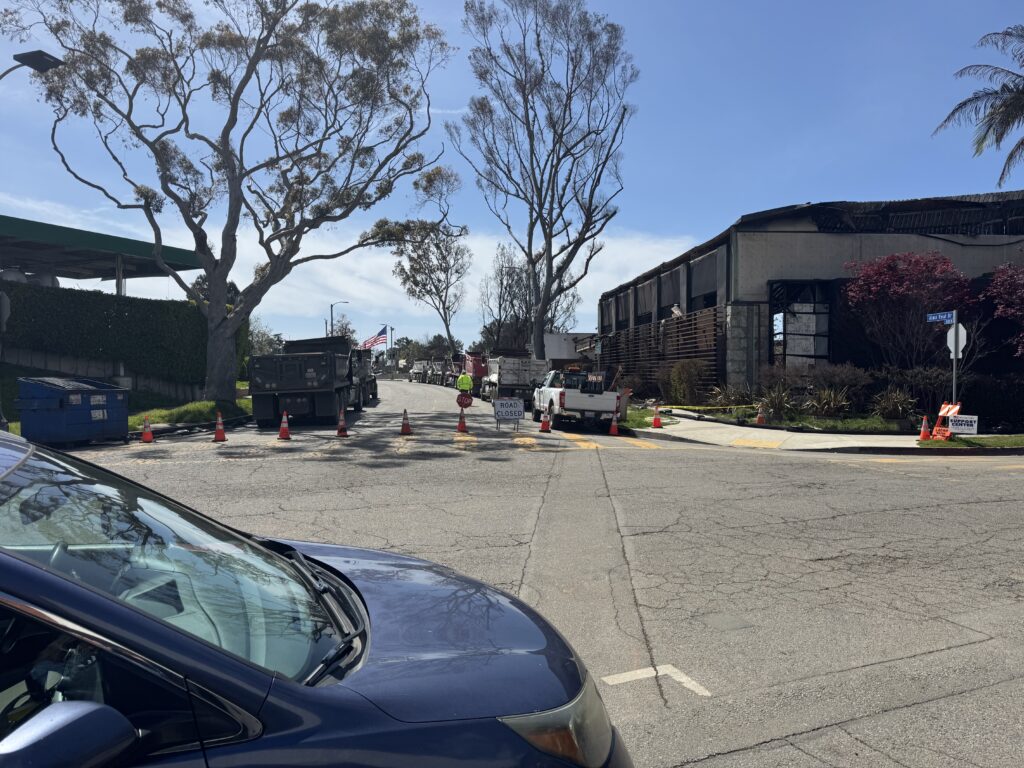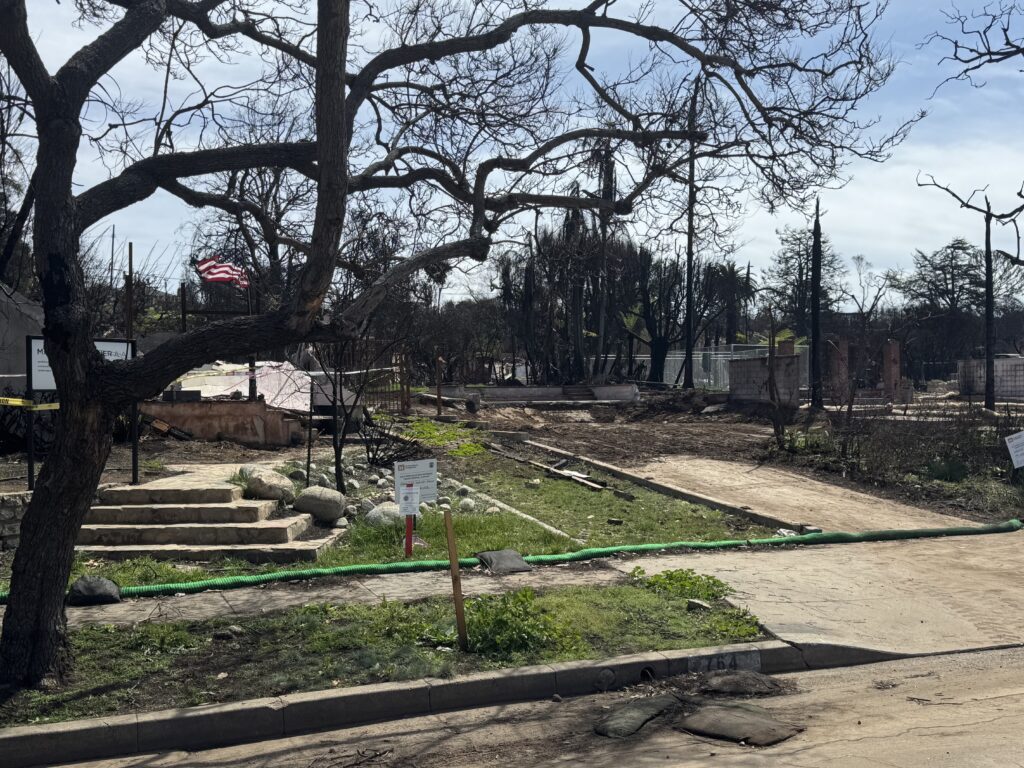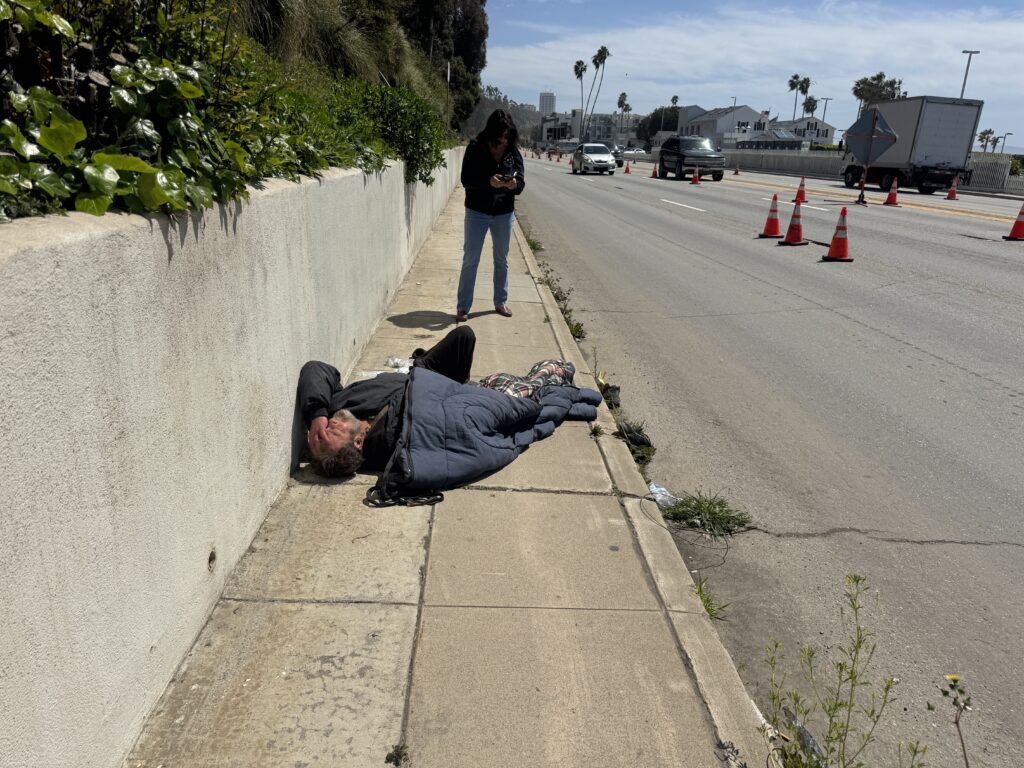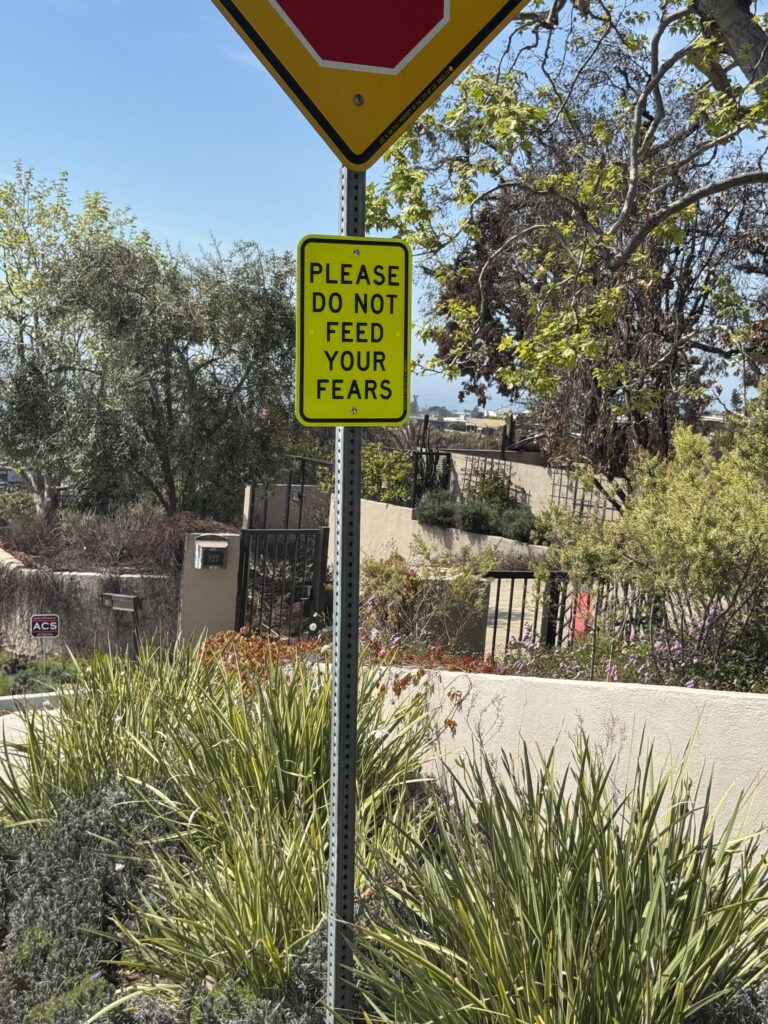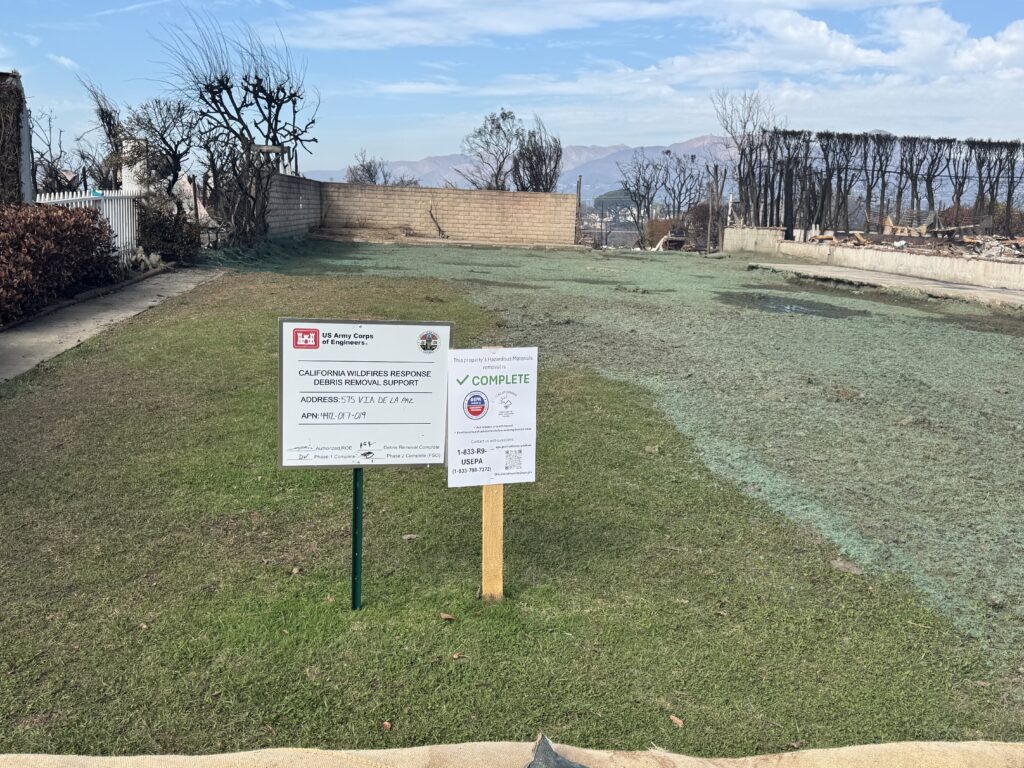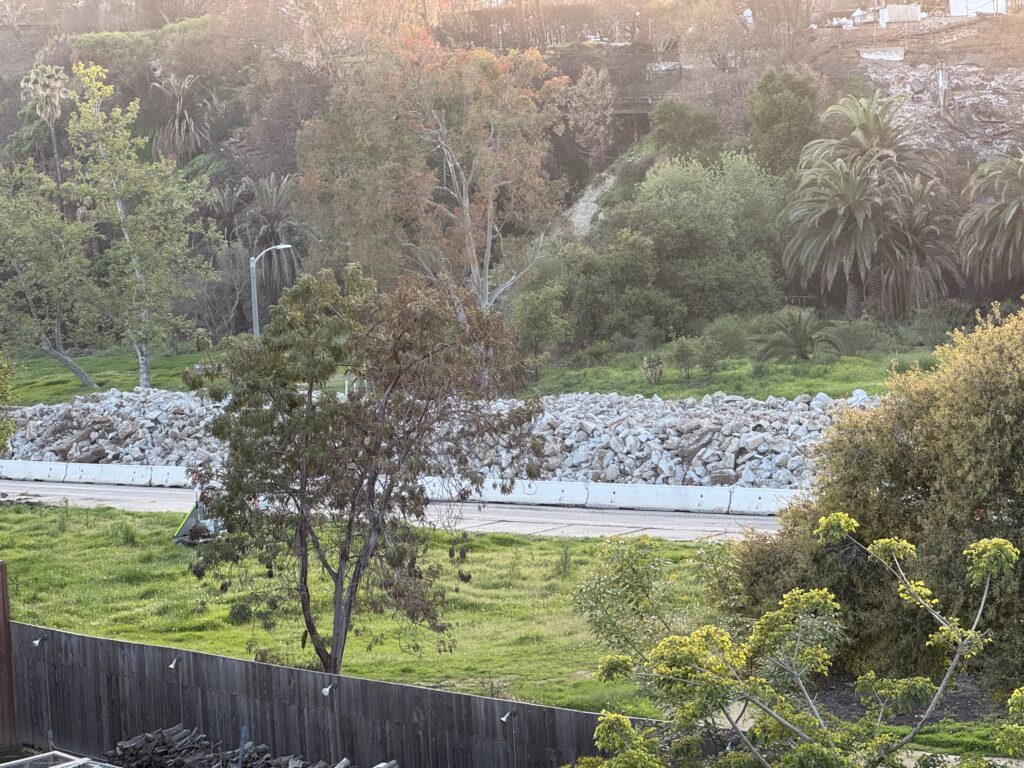
This photo was taken from the Radcliffe Avenue side of Temescal Canyon Road around sunset, and is a pile of concrete waiting to be ground and then recycled.
The Army Corps of Engineers work seven days a week. This editor visited with Colonel Brian Sawser, who is in charge of the Palisades operations, on March 23, a Sunday, and he was still working at 7 p.m.
A few days earlier, this editor had received a tour of the concrete and steel recycling on Temescal Canyon Road and it was impressive.
As of March 27, an average of about 145 tons of steel had been recycled per day. Foundations that were brought to Temescal were broken and ground into smaller pieces, resulting in about 71,000 tons (about 600 homes). And the number is only going up as they expect to hit the peak of debris removal/recycling in April and May.
The materials are sent to Bradley Recycling for processing.
Adam Carolla, a longtime Malibu resident, podcaster and comedian, took a ride with the Army Corp and looked at the recycling set up in Temescal Canyon click here.
Lt. Colonel Nate Weander spoke at the Pacific Palisades Community Council meeting on March 27. He said that the Corp were at 78 percent efficiency and had removed 210,000 tons of debris.
There are 78 crews on the ground here, working on 35 properties a day. They expect to have more than 60 percent of all lots done by the end of May (of the people who have opted-in).
But the myths and the gossip mill has been alive in the Palisades, spreading false information. Here are some facts.
The Army Corp of Engineers (ACE) has been hired by FEMA to perform debris removal. People can opt in or opt out to have ACE do removal. L.A. County handles that paperwork. The final date to make the decision is April 15.
If you chose neither option and your property is not cleared, L.A. Mayor Karen Bass has suggested that those properties could be declared a nuisance, and owners would be responsible for abatement costs and a lien might be put on a property.
ACE does not charge for debris removal. They also do not completely clear a lot. They will ask if one wants to leave the foundation standing, and they will check if you want trees removed. They take everything in the ash footprint and six inches of topsoil.
They do not take driveways, swimming pools or other hardscape that is not in the ash footprint.
To entirely clear a property, homeowners could then go to their insurance to use the debris removal to finish it. If there is any insurance money left after debris removal, L.A. County could ask for it. The CORPS DOES NOT TAKE MONEY FROM HOMEOWNERS NOR THEIR INSURANCE COMPANIES.
Some people complained that the Corps had cut down trees in the street parkways. That was not the Corps, that was DWP. DWP also went on to some properties to cut trees. The Corps will bring an arborist to a property. According to all of the people who have had properties cleared, the Army Corp has been respectful and helpful.
The Army Corps was also incorrectly cited by Palisades Bowl owners in a February 25 note to the people whose homes were lost.
“The Army Corps of Engineers informed us that to proceed with the clean-up, we are required to provide this notice to you. Please be advised that effective January 7, 2025, and as a consequence of the complete destruction of the Community, including your previously leased premises, your lease and tenancy is terminated, as a matter of law. However, and consistent with Civils Code section 798.62, should the Community be rebuilt, your rights under that provision of the Mobilehome Residency Law will be honored. Once we understand the timeline for cleanup, we will provide an additional notice identifying the last date on which you may schedule time to access the Community for purposes of removing any personal property owned by you that survived the fire.”
CTN, who received the note at the end of March, checked the accuracy with ACE.
USACE Public Affairs Officer Erin Jimenez responded March 29, I’ve confirmed that Col. Sawser did not provide the information mentioned to the Palisades Bowl owners.”
Amidst problems with the City (no explanations for the lack of water and firefighters, allowing DWP to take over a public park, providing no financial help for homeowners, no fee/permit waivers ) and the County (opting in and opting out was not easy and for some was a bureaucratic nightmare), the Army Corp of Engineers seem to be operating efficiently and not afraid to tell the truth, even if it might make people unhappy.
In an April 1 meeting held by Mayor Karen Bass bout debris trucks on Sunset, Sawser answered that the majority of the trucks are on PCH to the 10 Freeway to the 405 Freeway. “Sunset does get a small minority of trucks,” he said.
He explained that they try to keep the trucks moving so that they can make two to three turns per day to the sites where debris is dumped. “It’s an optimization problem,” he said, noting that they have hundreds of trucks they have move in multiple directions. He said Sunset is legally permissible to use, but they try to mitigate the use of Sunset.
“I do apologize,” he said. “It will probably be stressful for a few more months.”



